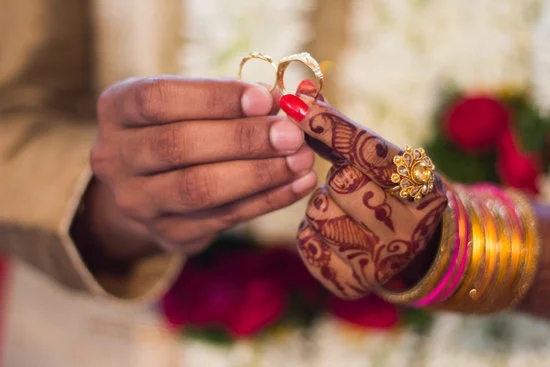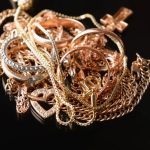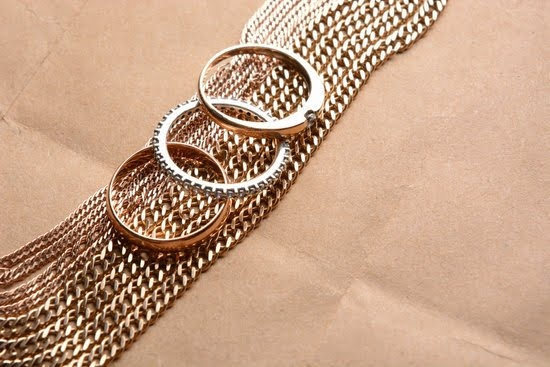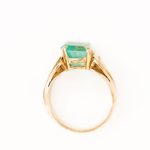Interested in learning how to make string beaded jewelry? String beaded jewelry making has a long-standing history and holds significant cultural and personal importance for many people. With the growing popularity of do-it-yourself (DIY) crafts, it’s no surprise that more and more individuals are immersing themselves in the art of creating their own unique and personalized pieces of jewelry.
To embark on your string beaded jewelry making journey, it’s important to familiarize yourself with the essential tools and materials needed for this craft. From beads to stringing materials, each item plays a crucial role in bringing your vision to life. Additionally, understanding how to choose the right beads and stringing material, as well as adding finishing touches like clasps and closures, are all integral components of creating quality pieces.
In this article, we will explore the history and significance of string beaded jewelry, as well as delve into the practical aspects of this craft. We’ll provide guidance on choosing beads and stringing materials, offer step-by-step instructions for jewelry making, discuss common issues encountered during the process, showcase design ideas for inspiration, and conclude with encouragement for readers to continue honing their skills in this creative endeavor.
Whether you’re a novice or experienced jewelry maker, there’s always something new to learn in the world of string beaded jewelry making.
Essential Tools and Materials
When it comes to making string beaded jewelry, having the right tools and materials is essential for a successful and enjoyable crafting experience. Before you dive into your first project, it’s important to gather all the necessary items you will need. Some of the essential tools include round-nose pliers, wire cutters, bead boards or mats, and bead reamers. These tools will help you measure, cut, shape, and manipulate your beads and stringing material with ease.
In addition to the tools mentioned above, there are also key materials that you’ll need to have on hand. The most basic material is the beads themselves, which come in a wide variety of shapes, sizes, colors, and materials. Other important materials include the stringing material (such as beading wire or thread), crimps and crimp covers for securing the ends of your jewelry piece, as well as clasps or closures to finish off your design.
It’s important to note that the quality of your tools and materials can greatly impact the overall outcome of your jewelry piece. Investing in good quality tools and using high-quality beads and stringing materials can make a significant difference in the durability and appearance of your finished product.
By taking the time to gather all of these essential tools and materials before starting your project, you’ll set yourself up for a smooth and successful jewelry-making experience. With all these essentials at your disposal, you’ll be ready to learn how to make string beaded jewelry with confidence.
Choosing Your Beads
Choosing the right beads is a crucial step in creating beautiful string beaded jewelry. With so many options available, it’s important to consider the design, color scheme, and overall aesthetic of your project. When deciding on beads for your jewelry piece, there are several factors to keep in mind.
First, consider the type of bead you want to use. Are you looking for glass, acrylic, or metal beads? Each material offers a unique look and feel to your jewelry. Glass beads provide a sophisticated and elegant touch, while acrylic beads offer a lightweight and affordable option. Metal beads can add a modern and edgy vibe to your designs.
Next, think about the shape and size of the beads. Do you want uniform round beads or irregularly shaped ones? The size of the beads will also impact the overall look of your jewelry piece. Larger beads make a bold statement, while smaller beads create a delicate and intricate appearance.
It’s also essential to consider the color palette for your beaded jewelry. Whether you’re going for a monochromatic scheme or a vibrant mix of colors, selecting the right hues can enhance the beauty of your creation. Take into account whether you want solid-colored beads or multicolored ones to achieve the desired effect.
When choosing your beads, always remember that quality matters. Opt for high-quality beads that are durable and well-made to ensure that your jewelry piece stands the test of time.
Now that you’ve learned about how to choose the right beads for your string beaded jewelry project, it’s time to put this knowledge into practice. Start experimenting with different bead types, shapes, sizes, materials, and colors to create stunning and personalized pieces that reflect your unique style and creativity.
| Factors to Consider When Choosing Beads | Tips |
|---|---|
| Type of Bead (Glass, Acrylic, Metal) | Consider the look and feel each material offers |
| Shape and Size | Impact on overall appearance of jewelry piece |
| Color Palette | Effects on design aesthetic |
Selecting the Right Stringing Material
When it comes to making string beaded jewelry, one of the most crucial decisions you’ll need to make is choosing the right stringing material. The type of string you use can greatly impact the overall look, feel, and durability of your jewelry. There are several options to consider, each with its own unique properties and benefits.
First and foremost, consider the weight and size of your beads. Larger or heavier beads will require a thicker and sturdier string to ensure they are properly supported. For delicate or lightweight beads, a finer string may be more suitable. It’s essential to match the strength and thickness of your string to the specific requirements of your project.
Next, think about the flexibility and drape you want your jewelry to have. Some stringing materials offer more flexibility than others, which can affect how the finished piece hangs and moves when worn. If you’re creating a piece that needs to flow naturally with the body, such as a necklace or bracelet, choose a string that provides the desired level of movement.
Finally, take into account any special considerations such as color or texture that may enhance or complement your beadwork. Certain strings come in a wide range of colors and finishes, allowing you to seamlessly blend them with your chosen beads for a cohesive look.
In summary, taking the time to select an appropriate stringing material for your beaded jewelry project is essential in ensuring its quality and longevity. Consider factors such as bead size and weight, flexibility, and aesthetic qualities when making your decision.
| Stringing Material | Considerations |
|---|---|
| Silk Thread | Best for pearls or other delicate beads due to its softness |
| Nylon Cord | Durable and available in various colors; suitable for most bead types |
| Wire | Great for sculptural designs but can be less flexible than other options |
Step-by-Step Instructions for String Beaded Jewelry Making
Once you have gathered all the essential tools and materials for making string beaded jewelry, it’s time to dive into the step-by-step process. Follow these instructions to create your own beautiful and unique pieces:
1. Design Planning: Before starting, it’s important to have a clear idea of the design and pattern you want for your jewelry. Whether it’s a simple bracelet or an intricate necklace, sketching out the design can help guide you through the process.
2. Bead Selection: Once you have your design in mind, it’s time to choose your beads. Consider the color scheme, size, and material of the beads that will best complement your design. Whether you want to use glass beads for a more classic look or gemstone beads for a touch of elegance, the choice is yours.
3. Stringing: Now that you have your beads selected, it’s time to start stringing them together. Cut a length of your chosen stringing material (e.g. nylon cord, silk thread) to accommodate the length of your jewelry piece. Use a beading needle if working with smaller beads to ease the stringing process.
4. Building Your Jewelry Piece: Begin threading your beads onto the string in accordance with your design plan. Take your time and pay attention to detail as you carefully arrange each bead in its place.
5. Finishing Touches: Once all of the beads are strung onto the material, add any necessary closures such as clasps or hooks to complete your jewelry piece.
By following these step-by-step instructions on how to make string beaded jewelry, you can create stunning pieces that reflect your personal style and creativity.
Adding Finishing Touches
Techniques for Adding Clasps
When it comes to adding finishing touches to your string beaded jewelry, one of the most crucial steps is attaching clasps and closures. There are several techniques for adding clasps, including using jump rings, crimp beads, and wire guardians. It’s important to choose a clasp that not only complements the design of your jewelry but also provides a secure closure. Take the time to carefully attach the clasps, ensuring that they are properly secured to prevent any accidental breakage.
Ensuring Durability and Longevity
To ensure that your string beaded jewelry withstands daily wear and tear, it’s essential to pay attention to durability. One tip for enhancing the durability of your jewelry is to add a protective coating or sealant over the beads. This can help prevent chipping or scratching of the beads over time. Additionally, consider using strong and durable stringing materials such as nylon-coated steel wire or silk thread for better longevity.
Personalized Finishing Touches
While adding clasps and ensuring durability are important aspects of finishing your beaded jewelry, don’t forget about personalized touches. Consider adding charms, pendants, or other embellishments that reflect your unique style and personality. These additional elements can elevate the overall look of your jewelry and make it stand out as a one-of-a-kind piece.
By incorporating these techniques for adding finishing touches, you can ensure that your string beaded jewelry not only looks beautiful but also lasts long and reflects your personal style.
And don’t forget – if you need guidance on how to make string beaded jewelry from scratch, refer back to the step-by-step instructions provided earlier in this article.
Troubleshooting Common Issues
Addressing Bead Misalignment
One common issue that beaders may encounter during the jewelry-making process is bead misalignment. This can occur when the beads are not properly aligned in a straight line, resulting in a sloppy and unprofessional-looking finished product. To address this issue, it is important to pay close attention when stringing the beads onto the stringing material.
Take your time and ensure that each bead is placed carefully and evenly to avoid misalignment. Additionally, using a bead stopper or tape at both ends of the string can help keep the beads in place while you work.
Dealing With String Breakage
Another common problem that beaders may face is string breakage. This can happen when using a stringing material that is too thin or weak for the weight of the beads, or if the jewelry is pulled or tugged too forcefully. To prevent this issue, it is crucial to select a strong and durable stringing material that can support the weight of the beads used in your project.
It’s also important to handle the jewelry with care and avoid exerting excess pressure on it. If string breakage does occur, carefully remove and restring the jewelry using a sturdier string.
Resolving Clasp Malfunctions
Clasp malfunctions can also pose as an obstacle during jewelry-making. Whether it’s difficulty in opening and closing clasps or clasps coming undone easily, these issues can affect the functionality and longevity of your beaded jewelry. To resolve clasp malfunctions, consider investing in high-quality clasps that are designed for durability and secure closure. Ensure that they are properly attached to the stringing material with no loose ends or weak connections.
By addressing these common issues, beaders can effectively troubleshoot problems that arise during their jewelry-making process and create beautiful, professional-looking pieces of string beaded jewelry.
Inspiration and Design Ideas
Crafting your own string beaded jewelry opens up a world of creative possibilities. Whether you’re making a necklace, bracelet, or pair of earrings, there are countless design ideas and inspiration to explore. When it comes to how to make string beaded jewelry, the options are endless and can cater to various tastes and styles.
One source of inspiration for your string beaded jewelry designs can come from the natural world. Consider incorporating gemstones, pearls, or shells into your pieces for a touch of earthy elegance. You can also experiment with different color combinations and patterns to mimic the beauty of nature in your creations. Additionally, drawing inspiration from cultural motifs and traditions can add unique flair to your designs, making each piece tell its own story.
For those who prefer a more modern and sleek aesthetic, geometric shapes and minimalist designs can serve as great starting points for creating contemporary string beaded jewelry. Play around with clean lines, contrasting colors, and asymmetric arrangements to achieve a bold and edgy look. Experimenting with metallic beads or incorporating other materials like leather or acrylic into your designs can also help you create strikingly modern pieces that stand out.
In addition to drawing inspiration from nature and modern influences, consider personalizing your string beaded jewelry by incorporating symbols and meanings that hold significance to you. Whether it’s using birthstones or crafting custom charms that represent special milestones in your life, infusing personal touches into your designs adds sentimental value to each piece.
Ultimately, whether drawing from nature’s beauty, exploring current fashion trends, or infusing personal meaning into your creations, the key is to let your creativity run wild when designing string beaded jewelry.
Conclusion and Next Steps
In conclusion, string beaded jewelry making is a creative and rewarding craft that allows individuals to express their unique style and personality through handmade accessories. By exploring the history and significance of string beaded jewelry, as well as the growing popularity of DIY jewelry making, it is evident that this art form has deep cultural roots and continues to resonate with modern enthusiasts.
As highlighted throughout this article, the essential tools and materials needed for string beaded jewelry making are readily available, and selecting the right beads and stringing materials is crucial to the success of your project. With step-by-step instructions provided, along with troubleshooting tips and design inspiration, individuals can feel confident in their ability to create beautiful and personalized pieces.
Frequently Asked Questions
What Is the Best Material for Stringing Beaders?
The best material for stringing beaders is usually high-quality, durable string or cord that can withstand the weight and tension of the beads. Materials like nylon, silk, or polyester are commonly used for their strength and flexibility.
What Is the Easiest Way to String Beads?
The easiest way to string beads is to use a beading wire or thread with a needle attached. This makes it easy to simply slide the beads onto the wire or thread without having to worry about knots or tangles. It allows for smooth and quick bead stringing.
What Is the Strongest Cord for Beading?
The strongest cord for beading is often considered to be braided Kevlar cord or heavy-duty fishing line, which are known for their strength and durability. These cords can handle the weight of heavy beads and resist fraying or stretching over time.

Welcome to my jewelry blog! My name is Sarah and I am the owner of this blog.
I love making jewelry and sharing my creations with others.
So whether you’re someone who loves wearing jewelry yourself or simply enjoys learning about it, be sure to check out my blog for insightful posts on everything related to this exciting topic!





